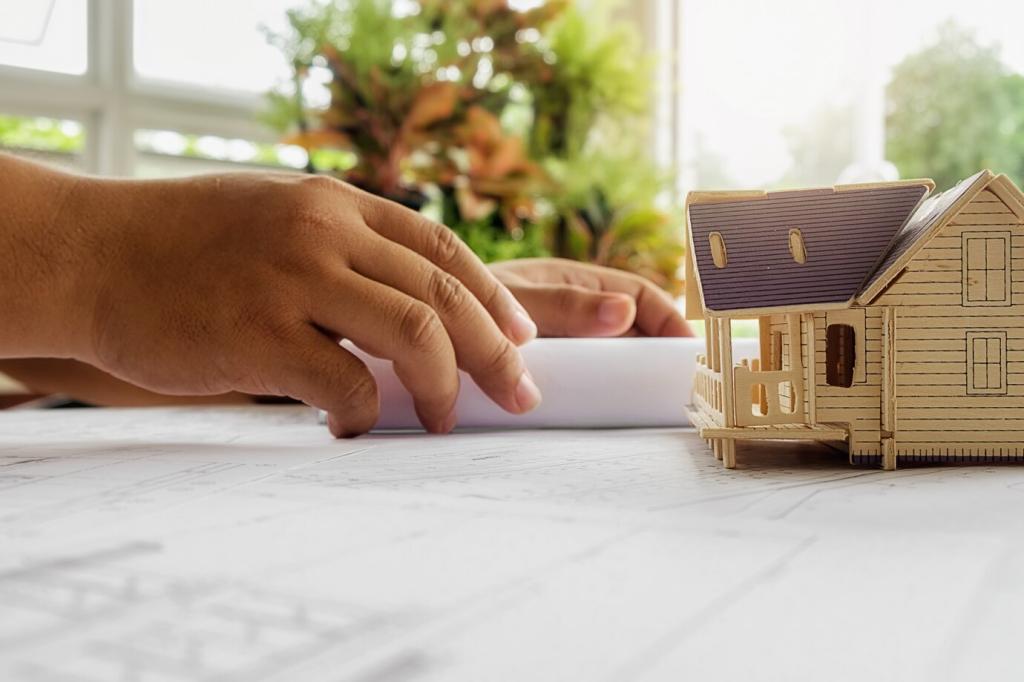
Security Enhancements in Smart Home Devices
Smart home devices are rapidly transforming the way we live, offering unprecedented convenience and automation for everyday tasks. However, as these devices become increasingly integrated into our daily lives, their security becomes a primary concern. Enhanced security measures not only protect user privacy but also ensure that smart devices work reliably and safely within the home environment. This page explores the recent advancements in smart home device security, highlighting essential improvements and their impact on the overall safety of modern households.

End-to-End Data Protection
Ensuring the privacy of users, end-to-end encryption now plays a pivotal role in smart home security frameworks. With this approach, data is encrypted at its origin and remains protected until it reaches its intended recipient. This level of security ensures that device-to-device communication, such as between a smart lock and a home hub, remains inaccessible to intermediaries, hackers, or service providers. As end-to-end encryption becomes standard, users can feel confident that daily routines, habits, and sensitive information shared among smart devices cannot be easily intercepted or exploited, greatly minimizing the risk of security breaches within connected households.

Secure Firmware Updates
Firmware updates are essential for maintaining device functionality and security, but they also represent a potential vulnerability. In response, manufacturers are increasingly deploying secure update mechanisms that verify software authenticity before installation. Such methods often involve digital signatures and robust verification processes to prevent malicious or unauthorized code from being loaded onto devices. By assuring that only legitimate updates are accepted and installed, these improvements reduce the risk of cyberattacks that exploit outdated or compromised device firmware, thereby strengthening the long-term security posture of smart home ecosystems.

Enhanced Wireless Communication Protocols
Wireless protocols form the backbone of smart home device interaction, making their security a top priority. Innovations in protocols like Zigbee, Z-Wave, and Wi-Fi have led to improved authentication, stronger encryption, and better handling of potential vulnerabilities. For instance, newer versions often discourage or eliminate the use of static default credentials, which have historically been a frequent target for attackers. These enhancements make wireless communications more resistant to eavesdropping and unauthorized access, providing homeowners with a more secure network environment for their growing array of connected devices.
Multi-Factor Authentication Integration
Multi-factor authentication (MFA) is revolutionizing the way homeowners interact with their smart devices. By requiring users to verify their identity through multiple methods—such as a password, a biometric scan, or a verification code—MFA significantly reduces the likelihood of unauthorized access. This layered approach ensures that even if one security measure is compromised, an attacker cannot easily gain control over critical devices. The integration of MFA into smart home systems offers a proactive defense against common attack vectors, providing robust security without excessively compromising user convenience.
Role-Based User Permissions
The introduction of role-based access control systems allows homeowners to set precise permissions for each household member or guest. This level of granularity ensures that only authorized users can operate or configure certain devices, preventing accidental or malicious misuse. For example, parents can restrict children’s access to security systems while granting them control over entertainment devices. By segmenting privileges, these systems restrict potential damage in the event of a compromised account and significantly improve overall household security by limiting who can perform sensitive operations.
Device-to-Device Mutual Authentication
Traditional authentication has mainly focused on user-device interaction, but device-to-device authentication is becoming increasingly important. This security measure ensures that only trusted devices within the network can communicate with each other, effectively preventing rogue devices from gaining access or issuing commands. By enabling mutual authentication protocols, manufacturers add an extra layer of verification to every interaction within the smart home, securing not just the gateway but every connection point and dramatically reducing the risk of internal compromise.
Previous slide
Next slide
Threat Detection and Response Systems
01
AI-Powered Intrusion Detection
Artificial intelligence is at the forefront of modern threat detection in smart home environments. AI-powered systems continuously analyze patterns of device activity, identifying anomalies that might indicate unauthorized access, malware, or attempted breaches. These intelligent solutions adapt to each user’s unique habits, reducing false alarms and prioritizing meaningful alerts. By learning from each interaction, AI-driven platforms can detect new or evolving threats faster than traditional methods, empowering homeowners with a dynamic safeguard that stays one step ahead of cybercriminals.
02
Automated Incident Response
Automation is revolutionizing incident response within the smart home. Once a potential threat or breach is detected, automated systems can quickly isolate affected devices, restore settings, or alert the homeowner through various channels. This rapid reaction minimizes potential damage and ensures that corrective actions are taken even if the user is unavailable or unaware of the issue. Automated incident response not only addresses threats more efficiently than manual intervention but also contributes to an overall decrease in successful attacks within the connected household.
03
Continuous Network Monitoring
Continuous network monitoring has become a staple of comprehensive smart home security systems. By persistently analyzing data traffic, device connections, and command patterns, these systems can identify irregular behavior that may signify a breach or vulnerability. Advanced monitoring platforms can provide real-time notifications of security events, giving homeowners greater visibility and control over their environment. This ongoing vigilance helps to proactively detect and neutralize risks, contributing to the resilience and reliability of the smart home infrastructure.
